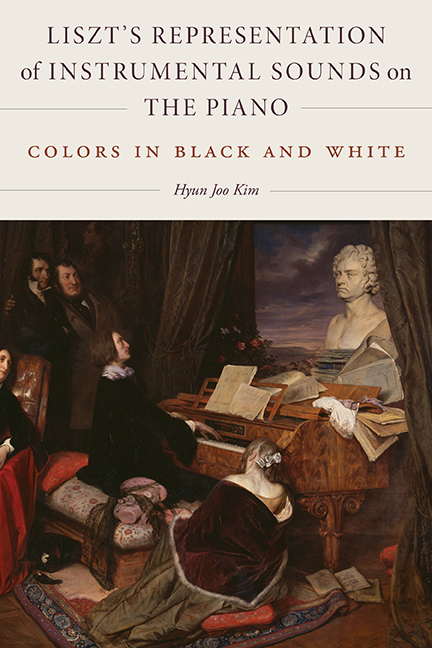Book contents
- Frontmatter
- Contents
- Introduction
- 1 Approaching the Reproductive Arts
- 2 “Partitions de Piano”
- 3 Between “Text” and “Event”: Liszt's Guillaume Tell Overture
- 4 Translating the Orchestra: Liszt's Two-Piano Arrangements of His Symphonic Poems
- 5 Interpretive Fidelity to Gypsy Creativity: Liszt's Representations of Hungarian Gypsy Cimbalom Playing
- Conclusions: Recurring Techniques and Aesthetics
- Appendix: Liszt's Preface to His Piano Arrangements of Beethoven's Fifth and Sixth Symphonies in the Breitkopf & Härtel Edition, 1840
- Notes
- Bibliography
- Index of Liszt's Works by Genre
- Subject Index
Conclusions: Recurring Techniques and Aesthetics
Published online by Cambridge University Press: 06 September 2019
- Frontmatter
- Contents
- Introduction
- 1 Approaching the Reproductive Arts
- 2 “Partitions de Piano”
- 3 Between “Text” and “Event”: Liszt's Guillaume Tell Overture
- 4 Translating the Orchestra: Liszt's Two-Piano Arrangements of His Symphonic Poems
- 5 Interpretive Fidelity to Gypsy Creativity: Liszt's Representations of Hungarian Gypsy Cimbalom Playing
- Conclusions: Recurring Techniques and Aesthetics
- Appendix: Liszt's Preface to His Piano Arrangements of Beethoven's Fifth and Sixth Symphonies in the Breitkopf & Härtel Edition, 1840
- Notes
- Bibliography
- Index of Liszt's Works by Genre
- Subject Index
Summary
Liszt treated his models with the utmost care. His endeavors to capture the essence of these models attest to his genuine admiration for them. His conscientious and inventive approach to rendering them on the keyboard testifies to his integrity and his indisputable mastery of the piano. By exploring every possible resource available on the piano, he minimized the ostensible disadvantages of the piano, ensuring the most faithful rendering of the model. His reworkings represent the blurring of boundaries between reference and digression, composition and performance, and faithful reproduction and creative artistry. His compositional focus on the texture, sound, and timbre of instruments, in particular, illustrates his combination of detailed attention to the model instruments and his imaginative reconstruction of them.
For all Liszt's orchestral arrangements and Rhapsodies, the musical analyses have focused on his specific compositional techniques in his rendering of instrumental music. His reworking process demonstrates how scrupulously he approached the essence of the model, how effectively he provided solutions to problems in rendering the sounds and effects of the modeled instruments, and how individually he reinvigorated the borrowed material in his own pianistic terms. Despite the completely different source materials for his orchestral arrangements and the Rhapsodies, his reworking methods reveal that certain types of compositional techniques and aesthetics underlying them recur throughout. In what follows, we briefly reconsider the recurring techniques and aesthetics that Liszt deployed that were discussed in chapters 2–5. My goal here is to show how the diverse strands of Liszt's reworkings considered in this study may be compared, contrasted, and linked, ultimately propelling a new vision of the recurring theme that fidelity and creativity are interdependent throughout.
Orchestral Concept of Sound
Focus on Individual Instruments
Liszt's reworking methods in his orchestral arrangements and Rhapsodies reveal his deep interest in the distinctive sounds and effects of individual instruments. The immediately recognizable element is his detailed cues for instruments. The impulse behind these cues, in both the orchestral arrangements and the Rhapsodies, is his faith that the piano is capable of producing the sounds of the instruments. The carefully inscribed cues represent his scrupulousness toward detail as well as his aspiration for pianists to be aware of the original instruments and render them in a nuanced manner with keyboard touch and articulation.
- Type
- Chapter
- Information
- Liszt's Representation of Instrumental Sounds on the PianoColors in Black and White, pp. 145 - 158Publisher: Boydell & BrewerPrint publication year: 2019

